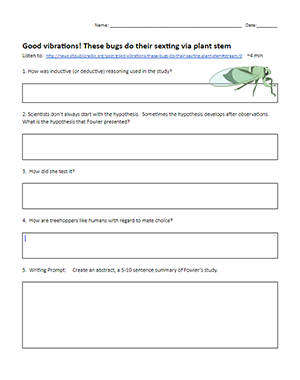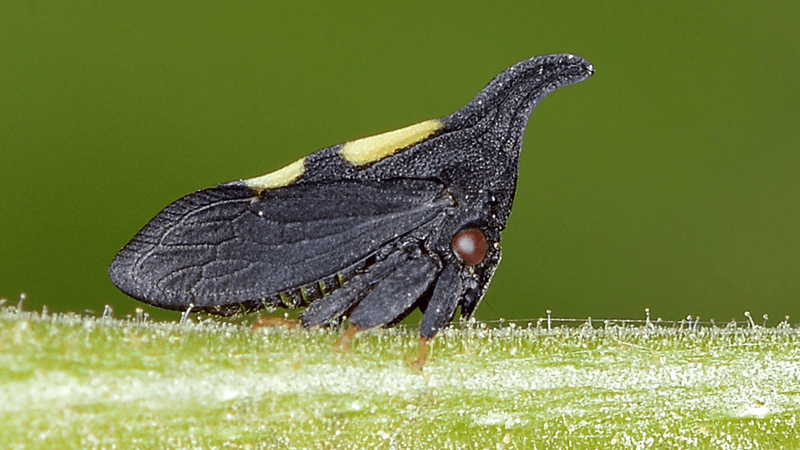
If you want to introduce your students to the world of science podcasts, you might start small with this short activity on treehoppers. Listen to a five-minute listen from St. Louis Public Radio which shares research on how insects use vibrations to find mates.
As students listen to the program, they identify the hypothesis and learn ways scientists work in the field. It’s an entertaining listen, complete with description of the humming noises that only treehoppers can hear.
The worksheet is set up in Google docs for distance learning, so all you need to do is share the document with your students. Any worksheet on google docs can be edited, but you will need to make your own copy and when assigning in Google Classroom, make a copy for each student.
The program is only 4 minutes long, which is perfect for an introduction to the scientific method. You can use the attached worksheet, or just listen and discuss with your class. Four minutes is short enough that you hopefully won’t lose too many of them.
Why introduce the scientific method this way?
I believe it is important for students to understand that the scientific method isn’t just a bunch of steps we learn in class. Real scientists apply scientific reasoning when they attempt to answer questions about the natural world.
If you want a more challenging exploration on the scientific method, check out “Cats Falling Out of Windows.” In this activity, students examine data collected on cat injuries. Data reveals that cats can survive very long falls, falls that would kill humans and most other animals. Cats have a unique physiology that increases their ability to survive long falls.


